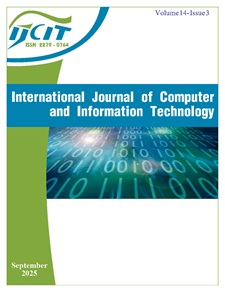The Trade-Off Between Anonymity and Accountability in Blockchain: A Framework for Secure and Compliant Systems
DOI:
https://doi.org/10.24203/xn8arw04Keywords:
Blockchain, Anonymity, Accountability, Privacy-Preserving Technologies, Regulatory Compliance, Zero-Knowledge Proofs, tive Privacy-Accountability Control (APAC)Abstract
Blockchain technology has revolutionized digital transactions by offering decentralization, transparency, and immutability. However, its inherent transparency often conflicts with the need for user privacy and anonymity, raising significant concerns regarding accountability, especially in regulatory and legal contexts. This study explores the delicate balance between anonymity and accountability in blockchain systems, proposing a framework that ensures both privacy and compliance with regulatory requirements. The research addresses key challenges in balancing these two aspects, evaluates the effectiveness of existing privacy-preserving technologies such as zero-knowledge proofs and ring signatures, and introduces the Privacy-Accountability Balanced Blockchain (PABB) Framework. This framework integrates Selective De-Anonymization, Self-Sovereign Identity (SSI), and the Adaptive Privacy-Accountability Control (APAC) Algorithm to dynamically adjust privacy levels based on regulatory conditions. Through theoretical analysis, mathematical modeling, and empirical validation, preserving privacy for 92% of transactions while enabling selective de-anonymization in high-risk cases, the study demonstrates that the APAC Algorithm effectively balances privacy and compliance needs. The findings suggest that privacy-conscious blockchain systems can coexist with accountability mechanisms, paving the way for ethical and legally sound blockchain applications. The study concludes that the PABB Framework offers a practical and scalable approach to achieving this balance, fostering trust among users and regulators alike.
References
[1] Nembe, J. K., Atadoga, J. O., Adelakun, B. O., Odeyemi, O., & Oguejiofor, B. B. (2024). Legal implications of blockchain technology for tax compliance and financial regulation. Finance & Accounting Research Journal, 6(2), 262-270. https://doi.org/10.51594/farj.v6i2.824
[2] Chipeta, W. B., & Malik, A. A. (2024). Balancing User Privacy and Legal Demands while Conducting Businesses on the Blockchain.10.47670/wuwijar202481wbcaam
[3] Abdelmohsen, D., Abdelkader, T., & Hashem, M. (2023). A Review on Privacy and Anonymity in Blockchain Security. In 2023 Eleventh International Conference on Intelligent Computing and Information Systems (ICICIS) (pp. 253-259). IEEE.10.1109/ICICIS58388.2023.10391174
[4] Tewari, S. H. (2020). Abuses of cryptocurrency in dark web and ways to regulate them. Available at SSRN 3794374.https://doi.org/10.51483/ijccr.3.1.2023.78-88
[5] Nakamoto, S., & Bitcoin, A. (2008). A peer-to-peer electronic cash system. Bitcoin.–URL: https://bitcoin. org/bitcoin. pdf, 4(2), 15.
[6] Al Jawaheri, H., Al Sabah, M., Boshmaf, Y., & Erbad, A. (2020). Deanonymizing Tor hidden service users through Bitcoin transactions analysis. Computers & Security, 89, 101684. 10.1016/j.cose.2019.101684
[7] Lavin, R., Liu, X., Mohanty, H., Norman, L., Zaarour, G., & Krishnamachari, B. (2024). A Survey on the Applications of Zero-Knowledge Proofs. arXiv preprint arXiv:2408.00243. https://doi.org/10.48550/arXiv.2408.00243
[8] Sahu, N., Gajera, M., Chaudhary, A., & Ivey-Law, H. (2023). SeDe: Balancing Blockchain Privacy and Regulatory Compliance by Selective De-Anonymization. arXiv preprint arXiv:2311.08167. https://doi.org/10.48550/arXiv.2311.08167
[9] Baquero, P. M. (2023). Layers of privacy in the blockchain: from technological solutionism to human-centred privacy-compliance technologies. International Journal of Law in Context, 19(1), 51-69. https://doi.org/10.1017/s1744552322000465
[10] Damgård, I., Ganesh, C., Khoshakhlagh, H., Orlandi, C., & Siniscalchi, L. (2020). Balancing Privacy and Accountability in Blockchain Transactions. IACR Cryptol. ePrint Arch., 2020, 1511. https://ia.cr/2020/1511
[11] Dehling, T., & Sunyaev, A. (2024). A design theory for transparency of information privacy practices. Information Systems Research, 35(3), 956-977. doi/10.1287/isre.2019.0239
[12] Zhang, T. (2023). Privacy evaluation of blockchain based privacy cryptocurrencies: A comparative analysis of dash, monero, verge, zcash and grin. IEEE Transactions on Sustainable Computing. DOI: 10.1109/TSUSC.2023.3303180
[13] Loreti, P., Bracciale, L., Raso, E., Bianchi, G., Sanseverino, E. R., & Gallo, P. (2023). Privacy and transparency in blockchain-based smart grid operations. IEEE Access. https://doi.org/10.1109/ACCESS.2023.3326946
[14] Barki, A., & Gouget, A. (2020). Achieving privacy and accountability in traceable digital currency. IACR Cryptol. ePrint Arch., 2020, 1565.
[15] Zhuk, A. (2025). Beyond the blockchain hype: addressing legal and regulatory challenges. SN Social Sciences, 5(2), 1-37. 10.1007/s43545-024-01044-y
[16] Lorenz, G. (2024). Regulating Decentralized Financial Technology: A Qualitative Study on the Challenges of Regulating DeFi with a Focus on Embedded Supervision. Stan. J. Blockchain L. & Pol'y, 7, 136.
[17] Huang, X., Xiao, Q., Li, Y., Li, P., Mai, Z., Chen, Z., ... & Song, J. (2024). Blockchain Technology and Privacy Protection: Applications and Implementation of Zero-Knowledge Proofs. In 2024 4th International Conference on Computer Science and Blockchain (CCSB) (pp. 637-641). IEEE. 10.1109/CCSB63463.2024.10735589
[18] Tian, X., Zhu, J., Zhao, X., & Wu, J. (2024). Improving operational efficiency through blockchain: evidence from a field experiment in cross-border trade. Production Planning & Control, 35(9), 1009-1024. https://doi.org/10.1080/09537287.2022.2058412
[19] Xue, Z., Wang, M., Zhang, Q., Zhang, Y.X., & Liu, P. (2021). A Regulatable Blockchain Transaction Model with Privacy Protection. Int. J. Comput. Intell. Syst., 14, 1642-1652. https://doi.org/10.2991/ijcis.d.210528.001
[20] Pavliv A. S. (2024). Anonymization Of Data Using Blockchain Technology: A Model for Data Lifecycle Management To Ensure Transparency And Compliance With GDPR https://doi.org/10.23939/csn2024.02.173
[21] Babu P., Zhe H., Kamanashis B.,Vallipuram M. (2023). Blockchain Interoperability: Performance and Security. Trade-Offs. Conference: SenSys '22: The 20th ACM Conference on Embedded Networked Sensor Systems. DOI: 10.1145/3560905.3568176
[22] Misal, J. (2024). Blockchain-Enabled Incident Management Systems: A Framework for Immutable Audit Trails and Enhanced Security Controls. Available at SSRN 5125047. https://doi.org/10.36948/ijfmr.2024.v06i06.32708
[23] Sarode, R.P., Watanobe, Y., Bhalla, S. (2023). A Blockchain-Based Approach for Audit Management of Electronic Health Records. In: Sachdeva, S., Watanobe, Y., Bhalla, S. (eds) Big Data Analytics in Astronomy, Science, and Engineering. BDA 2022. Lecture Notes in Computer Science, vol 13830. Springer, Cham. https://doi.org/10.1007/978-3-031-28350-5_7
[24] Hlushchenko P., Dudykevych V. (2024). Harnessing Blockchain and EBPF for Immutable Audit of System Events: A Technological Convergence Approach https://doi.org/10.18372/2410-7840.26.18844
[25] A. Ahmad, M. Saad, M. Al Ghamdi, D. Nyang and D. Mohaisen, "BlockTrail: A Service for Secure and Transparent Blockchain-Driven Audit Trails," in IEEE Systems Journal, vol. 16, no. 1, pp. 1367-1378, March 2022, doi: 10.1109/JSYST.2021.3097744. https://doi.org/10.1109/jsyst.2021.3097744
Downloads
Published
Issue
Section
License
Copyright (c) 2025 Idris Olanrewaju Ibraheem, Abdulrauf Uthman Tosho, Kamil Saka, Bolakale Lawal Aremu

This work is licensed under a Creative Commons Attribution-NonCommercial 4.0 International License.
The articles published in International Journal of Computer and Information Technology (IJCIT) is licensed under a Creative Commons Attribution-NonCommercial 4.0 International License.


